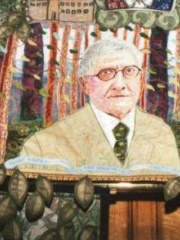
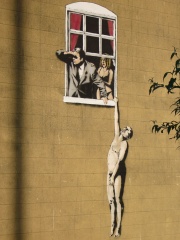

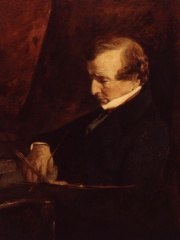
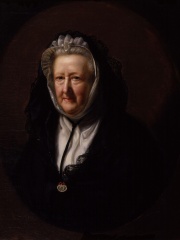
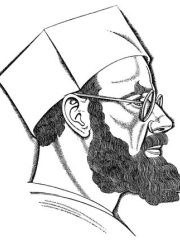
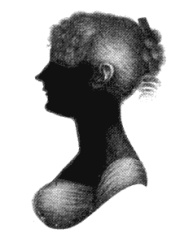
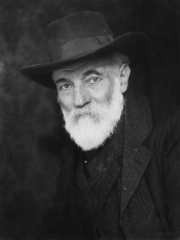
The Most Famous
ARTISTS from United Kingdom
This page contains a list of the greatest British Artists. The pantheon dataset contains 125 Artists, 11 of which were born in United Kingdom. This makes United Kingdom the birth place of the 3rd most number of Artists behind United States, and Germany.
Top 10
The following people are considered by Pantheon to be the top 10 most legendary British Artists of all time. This list of famous British Artists is sorted by HPI (Historical Popularity Index), a metric that aggregates information on a biography's online popularity. Visit the rankings page to view the entire list of British Artists.

1. David Hockney (b. 1937)
With an HPI of 70.35, David Hockney is the most famous British Artist. His biography has been translated into 42 different languages on wikipedia.
David Hockney (born 9 July 1937) is an English painter, draughtsman, printmaker, stage designer, and photographer. As an important contributor to the pop art movement of the 1960s, he is considered one of the most influential British artists of the 20th and 21st centuries. Hockney has owned residences and studios in Bridlington and London as well as two residences in California, where he has lived intermittently since 1964: one in the Hollywood Hills, one in Malibu. He has an office and stores his archives on Santa Monica Boulevard in West Hollywood, California. On 15 November 2018, Hockney's 1972 work Portrait of an Artist (Pool with Two Figures) sold at Christie's auction house in New York City for $90 million (£70 million), becoming the most expensive artwork by a living artist sold at auction. It broke the previous record which was set by the 2013 sale of Jeff Koons's Balloon Dog (Orange) for $58.4 million. Hockney held the record until 15 May 2019 when Koons reclaimed the honour by selling his Rabbit for more than $91 million at Christie's in New York.

2. Banksy (b. 1970)
With an HPI of 68.32, Banksy is the 2nd most famous British Artist. His biography has been translated into 63 different languages.
Banksy is a pseudonymous England-based street artist, political activist, and film director whose real name and identity remain unconfirmed and the subject of speculation. Active since the 1990s, his satirical street art and subversive epigrams combine dark humour with graffiti executed in a distinctive stencilling technique. His works of political and social commentary have appeared on streets, walls, and bridges throughout the world. His work grew out of the Bristol underground scene, which involved collaborations between artists and musicians. Banksy says that he was inspired by 3D, a graffiti artist and founding member of the musical group Massive Attack. Banksy displays his art on publicly visible surfaces such as walls and self-built physical prop pieces. He no longer sells photographs or reproductions of his street graffiti, but his public "installations" are regularly resold, often even by removing the wall on which they were painted. Much of his work can be classified as temporary art. A small number of his works are officially, non-publicly, sold through an agency he created called Pest Control. Banksy directed and starred in the documentary film Exit Through the Gift Shop, which made its debut at the 2010 Sundance Film Festival. In January 2011, it was nominated for the Academy Award for Best Documentary Feature Film. Banksy received the Webby Person of the Year award at the 2014 Webby Awards.

3. Edward Burne-Jones (1833 - 1898)
With an HPI of 67.01, Edward Burne-Jones is the 3rd most famous British Artist. His biography has been translated into 41 different languages.
Sir Edward Coley Burne-Jones, 1st Baronet, (; 28 August 1833 – 17 June 1898) was an English painter and designer associated with the Pre-Raphaelite Brotherhood's style and subject matter. Burne-Jones worked with William Morris as a founding partner in Morris, Marshall, Faulkner & Co in the design of decorative arts. His early paintings show the influence of Dante Gabriel Rossetti, but by 1870 he had developed his own style. In 1877, he exhibited eight oil paintings at the Grosvenor Gallery, a new rival to the Royal Academy of Arts. These included The Beguiling of Merlin. The timing was right and he was taken up as a herald and star of the new Aesthetic Movement. In the studio of Morris and Co. Burne-Jones worked as a designer of a wide range of crafts including ceramic tiles, jewellery, tapestries, and mosaics. Among his most significant and lasting designs are those for stained glass windows the production of which was a revived craft during the 19th century. His designs are still to be found in churches across the UK, with examples in the US and Australia.

4. William Etty (1787 - 1849)
With an HPI of 60.22, William Etty is the 4th most famous British Artist. His biography has been translated into 33 different languages.
William Etty (10 March 1787 – 13 November 1849) was an English artist best known for his historical paintings containing nude figures. He was the first significant British painter of nudes and still lifes. Born in York, he left school at the age of 12 to become an apprentice printer in Hull. He completed his apprenticeship seven years later and moved to London, where in 1807 he joined the Royal Academy Schools. There he studied under Thomas Lawrence and trained by copying works by other artists. Etty earned respect at the Royal Academy of Arts for his ability to paint realistic flesh tones, but had little commercial or critical success in his first few years in London. Etty's Cleopatra's Arrival in Cilicia, painted in 1821, featured numerous nudes and was exhibited to great acclaim. Its success prompted several further depictions of historical scenes with nudes. All but one of the works he exhibited at the Royal Academy in the 1820s contained at least one nude figure, and he acquired a reputation for indecency. Despite this, he was commercially successful and critically acclaimed, and in 1828 was elected a Royal Academician, at the time the highest honour available to an artist. Although he was one of the most respected artists in the country he continued to study at life classes throughout his life, a practice considered inappropriate by his fellow artists. In the 1830s Etty began to branch out into the more lucrative but less respected field of portraiture, and later became the first English painter to paint significant still lifes. He continued to paint both male and female nudes, which caused severe criticism and condemnation from some elements of the press. An extremely shy man, Etty rarely socialised and never married. From 1824 until his death he lived with his niece Betsy (Elizabeth Etty). Even in London he retained a keen interest in his native York, and was instrumental in the establishment of the town's first art school and the campaign to preserve York city walls. While he never formally converted from his Methodist faith, he was deeply attached to the Catholic Church and was one of the few non-Catholics to attend the 1838 opening of Augustus Pugin's chapel for St Mary's College, Oscott, at that time England's most important Catholic building. Etty was prolific and commercially successful throughout the 1840s, but the quality of his work deteriorated throughout this period. As his health progressively worsened he retired to York in 1848. He died in 1849, shortly after a major retrospective exhibition. In the immediate aftermath of his death his works became highly collectable and sold for large sums. Changing tastes meant his work later fell out of fashion, and imitators soon abandoned his style. By the end of the 19th century the value of all of his works had fallen below their original prices, and outside his native York he remained little known throughout the 20th century. Etty's inclusion in Tate Britain's landmark Exposed: The Victorian Nude exhibition in 2001–02, the high-profile restoration of his The Sirens and Ulysses in 2010 and a major retrospective of his work at the York Art Gallery in 2011–12 led to renewed interest in his work.

5. Damien Hirst (b. 1965)
With an HPI of 59.84, Damien Hirst is the 5th most famous British Artist. His biography has been translated into 38 different languages.
Damien Steven Hirst (; né Brennan; born 7 June 1965) is an English artist and art collector. He was one of the Young British Artists (YBAs) who dominated the art scene in the UK during the 1990s. He is reportedly the United Kingdom's richest living artist, with his wealth estimated at US$384 million in the 2020 Sunday Times Rich List. During the 1990s his career was closely linked with the collector Charles Saatchi, but increasing frictions came to a head in 2003 and the relationship ended. Death is a central theme in Hirst's works. He became famous for a series of artworks in which dead animals (including a shark, a sheep, and a cow) are preserved, sometimes having been dissected, in formaldehyde. The best-known of these is The Physical Impossibility of Death in the Mind of Someone Living, a 14-foot (4.3 m) tiger shark immersed in formaldehyde in a clear display case. In September 2008, Hirst made an unprecedented move for a living artist by selling a complete show, Beautiful Inside My Head Forever, at Sotheby's by auction and bypassing his long-standing galleries. The auction raised £111 million ($198 million), breaking the record for a one-artist auction as well as Hirst's own record with £10.3 million for The Golden Calf, an animal with 18-carat gold horns and hooves, preserved in formaldehyde. Since 1999, Hirst's works have been challenged and contested as plagiarised 16 times. In one instance, after his sculpture Hymn was found to be closely based on a child's toy, legal proceedings led to an out-of-court settlement.

6. Mary Delany (1700 - 1788)
With an HPI of 57.52, Mary Delany is the 6th most famous British Artist. Her biography has been translated into 18 different languages.
Mary Delany, earlier Mary Pendarves (née Granville; 14 May 1700 – 15 April 1788) was an English artist, letter-writer, and bluestocking, known for her "paper-mosaicks", botanic drawing, needlework and her lively correspondence.

7. Eric Gill (1882 - 1940)
With an HPI of 53.94, Eric Gill is the 7th most famous British Artist. His biography has been translated into 22 different languages.
Arthur Eric Rowton Gill (22 February 1882 – 17 November 1940) was an English sculptor, letter cutter, typeface designer, and printmaker. Although the Oxford Dictionary of National Biography describes Gill as "the greatest artist-craftsman of the twentieth century: a letter-cutter and type designer of genius", he is also a figure of considerable controversy following the revelations of his sexual abuse of two of his daughters and of his pet dog. Gill was born in Brighton and grew up in Chichester, where he attended the local college before moving to London. There he became an apprentice with a firm of ecclesiastical architects and took evening classes in stone masonry and calligraphy. Gill abandoned his architectural training and set up a business cutting memorial inscriptions for buildings and headstones. He also began designing chapter headings and title pages for books. As a young man, Gill was a member of the Fabian Society, but later resigned. Initially identifying with the Arts and Crafts Movement, by 1907 he was lecturing and campaigning against the movement's perceived failings. He became a Roman Catholic in 1913 and remained so for the rest of his life. Gill established a succession of craft communities, each with a chapel at its centre and with an emphasis on manual labour as opposed to more modern industrial methods. The first of these communities was at Ditchling in Sussex, where Gill established The Guild of St Joseph and St Dominic for Catholic craftsmen. Many members of the Guild, including Gill, were also members of the Third Order of Saint Dominic, a lay division of the Dominican Order. At Ditchling, Gill and his assistants created several war memorials including those at Chirk in north Wales and at Trumpington near Cambridge, along with numerous works on religious subjects. In 1924, the Gill family left Ditchling and moved to an isolated, disused monastery at Capel-y-ffin in the Black Mountains of Wales. The isolation of Capel-y-ffin suited Gill's wish to distance himself from what he regarded as an increasingly secular and industrialised society, and his time there proved to be among the most productive of his artistic career. At Capel, Gill made the sculptures The Sleeping Christ (1925), Deposition (1925), and Mankind (1927). He created engravings for a series of books published by the Golden Cockerel Press considered among the finest of their kind, and it was at Capel that he designed the typefaces Perpetua, Gill Sans, and Solus. After four years at Capel, Gill and his family moved into a quadrangle of properties at Speen in Buckinghamshire. From there, in the last decade of his life, Gill became an architectural sculptor of some fame, creating large, high-profile works for central London buildings, including both the headquarters of the BBC and the forerunner of London Underground. His mammoth frieze The Creation of Man was the British Government's gift to the new League of Nations building in Geneva. Despite failing health Gill was active as a sculptor until the last weeks of his life, leaving several works to be completed by his assistants after his death. Gill was a prolific writer on religious and social matters, with some 300 printed works including books and pamphlets to his name. He frequently courted controversy with his opposition to industrialisation, modern commerce, and the use of machinery in both the home and the workplace. In the years preceding World War II, he embraced pacifism and left-wing causes.

8. Cassandra Austen (1773 - 1845)
With an HPI of 53.10, Cassandra Austen is the 8th most famous British Artist. Her biography has been translated into 19 different languages.
Cassandra Elizabeth Austen (9 January 1773 – 22 March 1845) was an amateur English watercolourist and the elder sister of Jane Austen. The letters between her and Jane form a substantial foundation for scholarly understanding of the life of the novelist.

9. John Butler Yeats (1839 - 1922)
With an HPI of 52.92, John Butler Yeats is the 9th most famous British Artist. His biography has been translated into 19 different languages.
John Butler Yeats RHA (16 March 1839 – 3 February 1922) was an Irish artist and the father of W. B. Yeats, Lily Yeats, Elizabeth Corbett "Lollie" Yeats and Jack Butler Yeats. The National Gallery of Ireland holds a number of his portraits in oil and works on paper, including one of his portraits of his son William, painted in 1900.
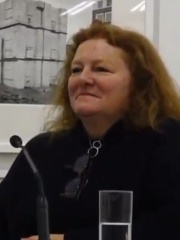
10. Rachel Whiteread (b. 1963)
With an HPI of 48.40, Rachel Whiteread is the 10th most famous British Artist. Her biography has been translated into 21 different languages.
Dame Rachel Whiteread (born 20 April 1963) is an English artist who primarily produces sculptures, which typically take the form of casts. She was the first woman to win the annual Turner Prize in 1993. Whiteread was one of the Young British Artists who exhibited at the Royal Academy's Sensation exhibition in 1997. Among her most renowned works are House, a large concrete cast of the inside of an entire Victorian house; the Judenplatz Holocaust Memorial in Vienna, resembling the shelves of a library with the pages turned outwards; and Untitled Monument, her resin sculpture for the empty fourth plinth in London's Trafalgar Square. She was appointed Commander of the Order of the British Empire (CBE) in 2006 and Dame Commander of the Order of the British Empire (DBE) in the 2019 Birthday Honours for services to art.
People
Pantheon has 11 people classified as British artists born between 1700 and 1970. Of these 11, 5 (45.45%) of them are still alive today. The most famous living British artists include David Hockney, Banksy, and Damien Hirst. The most famous deceased British artists include Edward Burne-Jones, William Etty, and Mary Delany.
Living British Artists
Go to all RankingsDavid Hockney
1937 - Present
HPI: 70.35
Banksy
1970 - Present
HPI: 68.32
Damien Hirst
1965 - Present
HPI: 59.84
Rachel Whiteread
1963 - Present
HPI: 48.40
Grayson Perry
1960 - Present
HPI: 40.10
Deceased British Artists
Go to all RankingsEdward Burne-Jones
1833 - 1898
HPI: 67.01
William Etty
1787 - 1849
HPI: 60.22
Mary Delany
1700 - 1788
HPI: 57.52
Eric Gill
1882 - 1940
HPI: 53.94
Cassandra Austen
1773 - 1845
HPI: 53.10
John Butler Yeats
1839 - 1922
HPI: 52.92
Overlapping Lives
Which Artists were alive at the same time? This visualization shows the lifespans of the 6 most globally memorable Artists since 1700.


